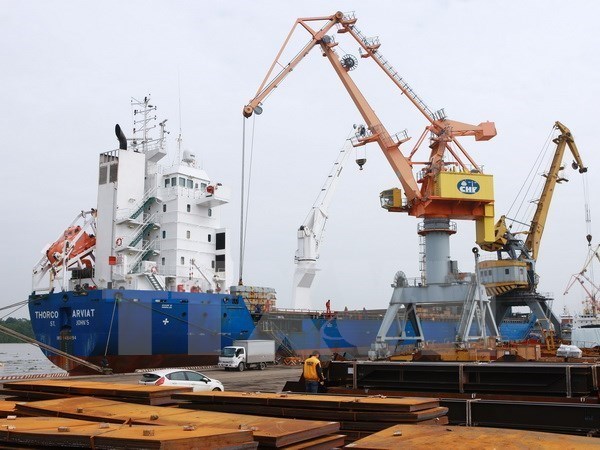Enterprises’ observance of import-export laws to be evaluated
A workshop took place in Hanoi on December 4 to collect feedback from enterprises on a draft circular to evaluate the level of law observance in imports and exports and transit of goods.
 A circular is being drafted to evaluate the level of businesses' law observance in imports and exports and transit of goods (Photo: VNA)
A circular is being drafted to evaluate the level of businesses' law observance in imports and exports and transit of goods (Photo: VNA)Hanoi (VNA) – A workshop took place in Hanoi on December 4 to collect feedback from enterprises on a draft circular to evaluate the level of law observance in imports and exports and transit of goods.
The event was held by the Vietnam Chamber of Commerce and Industry (VCCI) and the General Department of Vietnam Customs.
The circular is expected to have huge impacts on Vietnamese exporters and importers as it outlines a set of criteria for the classification of importers and exporters based on the level of law observance and on that basis, these businesses would be subject to different customs inspections and clearance regimes.
Vietnam’s increasingly open economy has facilitated foreign trade, with turnover doubling the country’s gross domestic products (GDP), said VCCI Vice President Hoang Quang Phong.
The expansion of import-export industries is posing plenty of challenges to customs authorities and the greatest among these are the rapid increases in the volume and diversity of imported and exported goods, meanwhile the number of qualified customs staff has not been able to keep up, Phong said.
The risk management method based on assessment of businesses’ law observance will be an appropriate approach to deal with the issue, he noted. It would improve the effectiveness of state management and raise awareness of the importance of law compliance among enterprises.
Once the goods are classified based on various degrees of risks associated with them in terms of smuggling, trade fraud or tax evasion, it would enable faster customs clearance for low-risk items, while law-abiding firms would benefit from saved costs and priority placement at customs, the VCCI official added.
Hoang Viet Cuong, deputy head of the General Department of Vietnam Customs, said the customs authority is adopting risk management measures which are widely used in developed countries to reduce burdens for its staff and optimise customs control.
The law observance-based risk management enables customs authorities to shift from pre- to post-customs clearance inspection with only a minimum quantity of goods checked.
Currently, goods are divided into green, yellow, and red flows for customs clearance, Cuong noted. The green flow applies to commodities entitled to exemption of customs declaration and actual inspection, with 60 percent of shipments going through this flow. The yellow flow applies to goods with low tax rates, common taxes, or goods imported for export processing (35 percent of shipments). Meanwhile, the red flow is applicable to commodities requiring permits and subject to higher tax rates (5 percent of shipments).
Under the draft circular, importers and exporters will be subject to a new system of classification which labels them according to four levels of law observation; Level 1 (High), Level 2 (Medium), Level 3 (Low), and Level 4 (Failure to observe laws).
Based on the classification, the customs authority will decide whether they are entitled to customs incentives, take proper actions to control import-export activities, and prevent smuggling and trade frauds.
A representative from C&A Tax Consultancy Co., Ltd. said the new classification would motivate firms to abide customs regulations more strictly, but noted that there should not be so many criteria that it would be difficult for firms to identify which criteria they violate and that the criteria should be simple and easy to comprehend. –VNA












